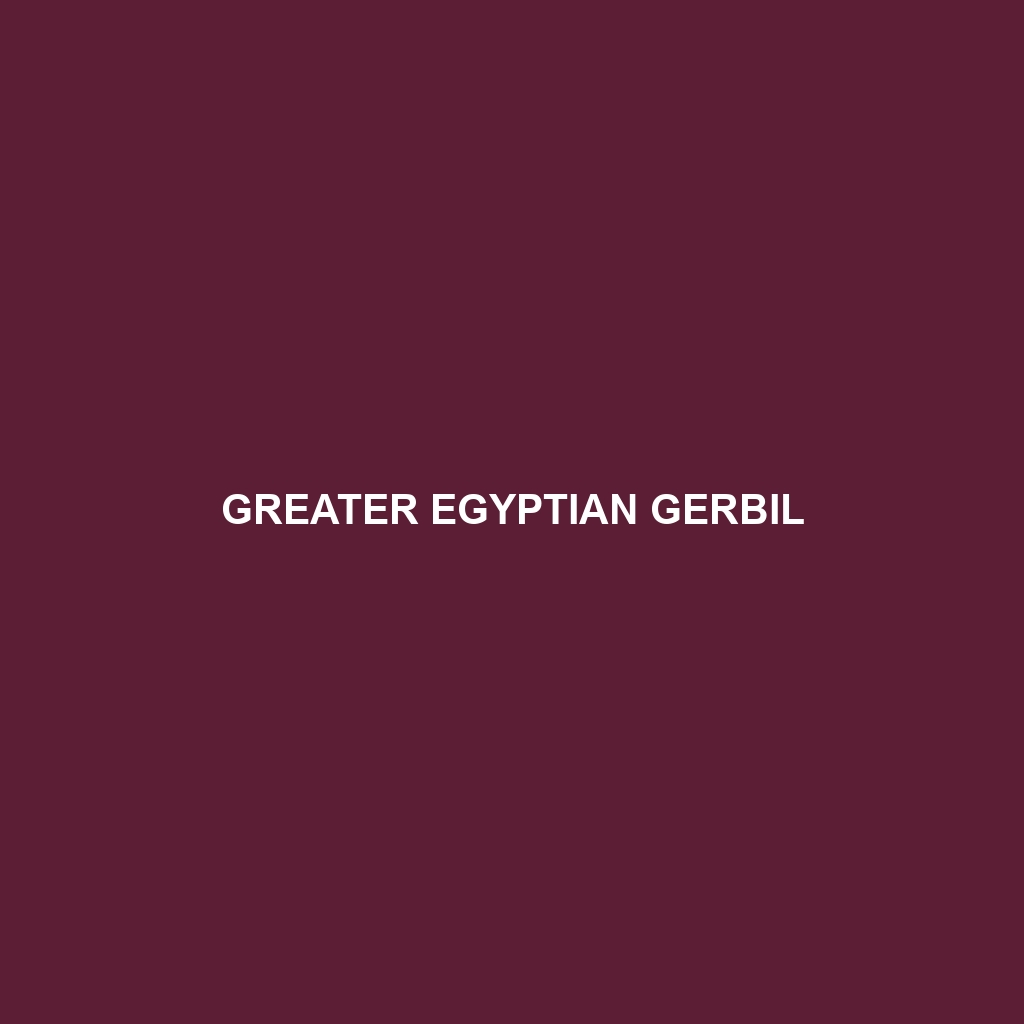Greater Egyptian Gerbil – Species Overview
Common Name: Greater Egyptian Gerbil
Scientific Name: Gerbillus argenteus
Habitat
The Greater Egyptian Gerbil is primarily found in the arid regions of northeastern Africa, particularly in countries like Egypt, Libya, and Sudan. This species inhabits sandy and rocky desert areas, often burrowing underground to escape the extreme heat and to find moisture in the desert environment. They are typically located in open areas with sparse vegetation, which allows for easy movement and foraging.
Physical Characteristics
Greater Egyptian Gerbils are medium-sized rodents, measuring approximately 12 to 15 cm in body length, excluding the long, tufted tail which can add an additional 10 to 12 cm. Their fur is primarily sandy brown, providing excellent camouflage in their natural desert habitat. They possess large eyes and ears, adapted for nocturnal life. The front paws are small and delicate, allowing them to dig effectively. Their distinctive long, bristly tails aid in balance and communication.
Behavior
This species is predominantly nocturnal, coming out to forage at night when temperatures are cooler. Greater Egyptian Gerbils are known for their social structure, often living in small groups. They communicate through various vocalizations and body language. Their burrowing behavior is not just for shelter but also serves as a means to create a complex network of tunnels that helps protect them from predators and harsh weather conditions.
Diet
Greater Egyptian Gerbils are primarily herbivorous, feeding on seeds, roots, and various plant materials found in their desert environment. They have adapted to obtain moisture from their diet, allowing them to survive in arid conditions. These gerbils are known to store food in their burrows, providing a reserve during scarce periods.
Reproduction
Breeding typically occurs after the rainy season, which brings about a temporary surge of food availability. Females can give birth to litters ranging from 2 to 7 offspring after a gestation period of about 25 days. The young are weaned and begin to explore their surroundings within a few weeks and are ready to mature by the time the next breeding season occurs.
Conservation Status
The Greater Egyptian Gerbil is currently classified as “Least Concern” according to the IUCN Red List. However, habitat destruction and climate change pose potential threats to their populations. Continued monitoring is essential to ensure the long-term survival of this unique desert rodent.
Interesting Facts
The Greater Egyptian Gerbil is known for its impressive jumping abilities, which help it evade predators. Additionally, its ability to survive with minimal water intake, relying on seed moisture, makes it a fascinating subject of study in desert adaptations.
Role in Ecosystem
As a seed eater, the Greater Egyptian Gerbil plays a vital role in seed dispersal, contributing to the biodiversity of desert flora. They serve as prey for various desert predators, thereby playing a crucial part in the food chain. Their burrowing activities also help aerate the soil, promoting a healthy ecosystem in their habitat.
